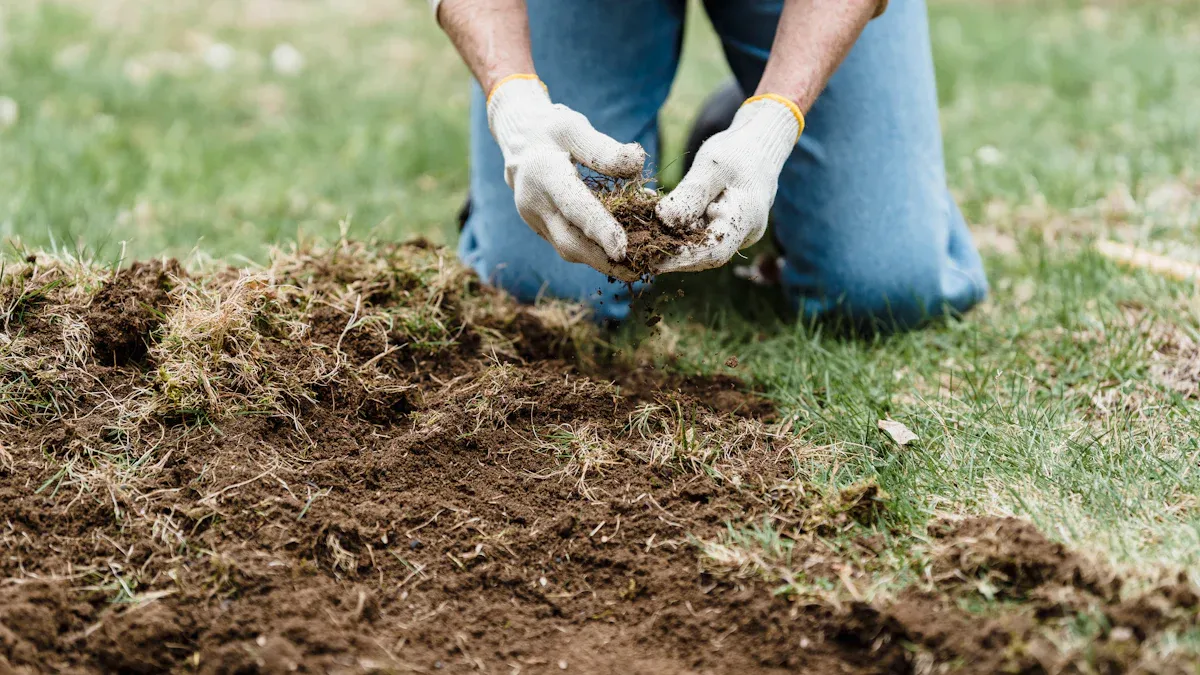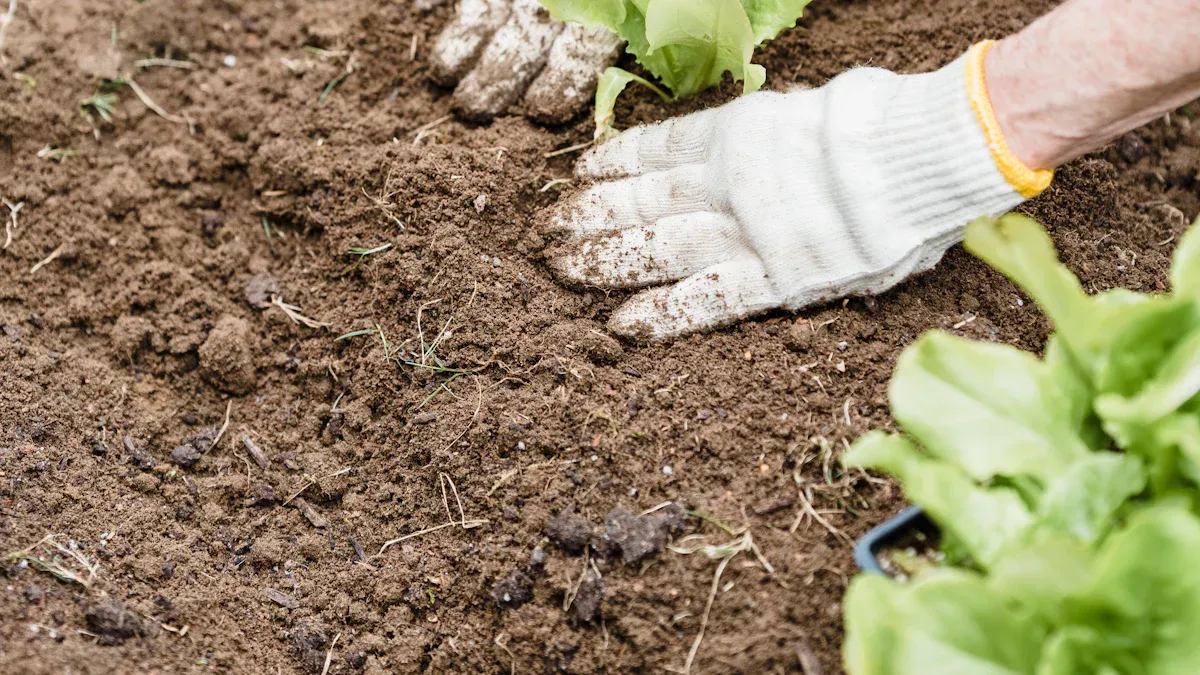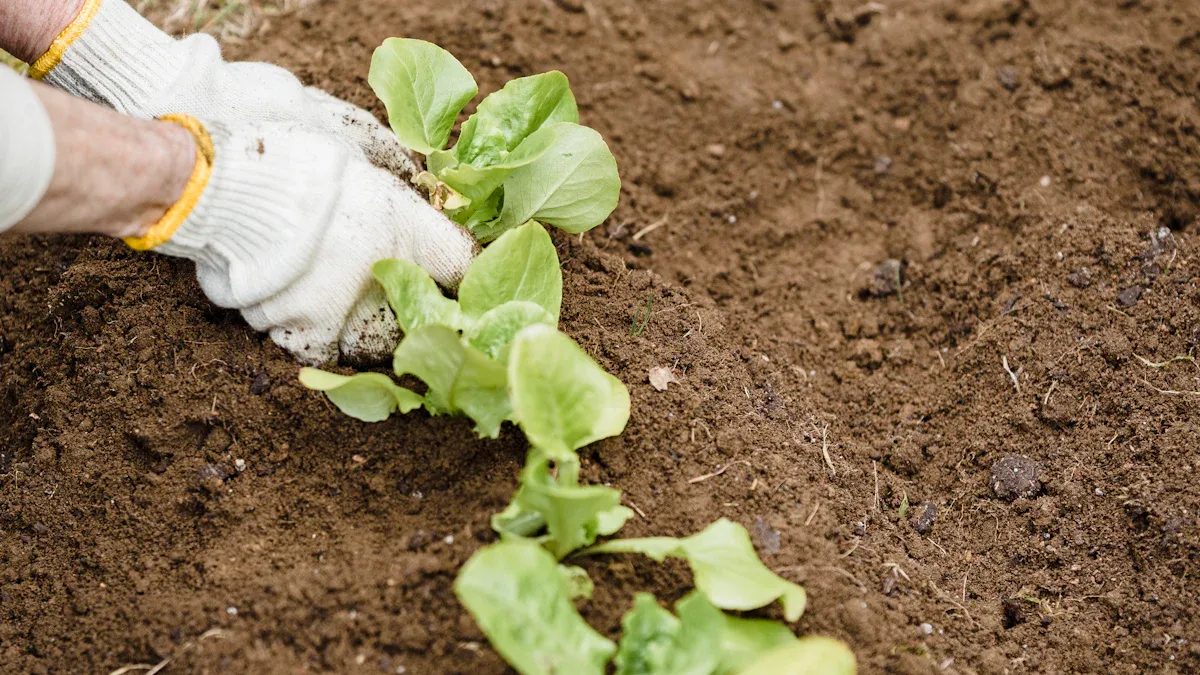
Have you ever thought about gardening without all the digging? A no-dig garden lets you do just that! This method keeps soil structure intact, improving overall health. Studies show that no-dig techniques can enhance water infiltration and increase nutrient levels in the soil. Plus, it saves you time and energy. Imagine planting directly into rich, layered compost without the back-breaking work. If you’re ready to simplify your gardening experience, starting a no-dig garden might be just what you need!
Key Takeaways
No-dig gardening improves soil health by preserving its natural structure. This helps beneficial organisms thrive, leading to healthier plants.
This gardening method reduces labor significantly. You can spend less time digging and more time enjoying your garden.
Choosing the right location is crucial. Ensure your garden gets enough sunlight, has good drainage, and is near a water source.
Layering organic materials like compost and mulch is essential. This technique helps suppress weeds and retains moisture in the soil.
No-dig gardening is accessible for everyone. It allows individuals with physical limitations to enjoy gardening without heavy labor.
Benefits of No-Dig Gardening
Improved Soil Health
No-dig gardening offers fantastic benefits for your soil. By avoiding traditional digging, you maintain the soil’s natural structure. This method helps preserve essential soil organisms, like earthworms and beneficial microbes, which play a crucial role in nutrient cycling. When you keep the soil intact, you create a thriving ecosystem that supports plant growth.
Here’s a quick look at how no-dig gardening compares to traditional methods:
Performance Metric | Traditional Cultivation | No Dig Methods | Improvement Factor |
|---|---|---|---|
Vegetable Yield (kg/m²) | 15.2 | 11.8 | +29% traditional |
Soil Depth (cm) | 45 | 28 | +61% traditional |
Nutrient Availability | High throughout profile | Variable, surface heavy | More consistent |
Water Infiltration | Excellent | Good at surface only | Better deep drainage |
As you can see, no-dig methods lead to more consistent nutrient availability and better water infiltration. This means your plants can access the nutrients and moisture they need to thrive.
Additionally, no-dig gardening promotes soil biodiversity. It enhances organic matter dynamics, which is vital for a healthy ecosystem. You’ll notice an increase in earthworm activity, which helps improve soil structure and nutrient availability. Earthworms enrich the soil with their waste, stimulating microbial growth and activity. This is essential for maintaining soil health and biodiversity.
Reduced Labor
One of the best parts about starting a no-dig garden is the reduced labor involved. You can say goodbye to the exhausting tasks of digging and tilling. Instead, you simply layer organic materials like compost and mulch. This approach saves you time and energy, allowing you to focus on enjoying your garden.
Here are some ways no-dig gardening cuts down on labor:
No need for annual tilling or digging
Reduced weeding time
Minimal ongoing effort after establishment
By switching to no-dig gardening, you can spend less time on maintenance and more time enjoying your garden. Many gardeners find that they can harvest and replant more often because they’re not bogged down by labor-intensive tasks. This method is accessible for individuals of all physical abilities, making gardening enjoyable for everyone.
Planning Your No-Dig Garden
Choosing the Right Location
Selecting the right spot for your no-dig garden is crucial. You want to ensure your plants thrive, so consider these factors:
Sunlight Exposure: Aim for at least 6 hours of sunlight daily. This helps your plants photosynthesize and grow strong.
Soil Quality: Look for loose, fertile, and well-draining soil. This prevents root rot and supports healthy development.
Drainage: Test the soil to ensure it drains well. Standing water can harm your plants.
Water Accessibility: Choose a location near a water source. This makes it easier to keep your garden hydrated during dry spells.
Wind Protection: Shield your garden from strong winds. This helps retain moisture and protects your plants from damage.
Microclimate Factors: Assess nearby structures that might affect temperature and moisture levels.
By keeping these factors in mind, you can create a thriving environment for your no-dig garden.
Designing Your Layout
When it comes to layout, starting small is a smart move. Here’s why:
Manageable Size: A smaller garden is easier to maintain. You can focus on nurturing your plants without feeling overwhelmed.
Easier to Expand: Once you feel comfortable, you can gradually expand your garden. This allows you to experiment with different plants and layouts.
Diversity: A smaller space encourages you to try a variety of plants. This enhances biodiversity and attracts beneficial insects.
For your layout, consider these dimensions:
Garden Bed Width: Keep it around 3 feet wide. This makes it easy to reach the center without stepping on the soil.
Pathway Width: Leave 18 to 24 inches for pathways. This provides enough space for you to move comfortably.
Starting with a well-planned layout sets the stage for a successful no-dig garden. You’ll enjoy the process and see great results!
Essential Materials for a No-Dig Garden

To create a thriving no-dig garden, you’ll need a few essential materials. Let’s dive into what you should gather to get started!
Cardboard and Compost
Cardboard serves as a fantastic base layer for your no-dig garden. It blocks sunlight, which helps suppress weeds. When choosing cardboard, stick to plain brown types. Avoid printed or coated cardboard, as these can contain harmful substances. Lay down a thick layer of cardboard, overlapping the edges to prevent any light from sneaking through.
On top of the cardboard, apply a generous layer of compost—ideally 6 to 8 inches thick. Compost is crucial for your plants’ health. It introduces beneficial microorganisms that outcompete pathogens, leading to stronger, more resilient plants. Here are some benefits of using compost:
Stronger, more resilient plants
Higher yields in edible crops
Improved root systems
Better resistance to environmental stresses
Compost not only nourishes your plants but also protects earthworms and enhances soil health. As it breaks down, it releases nutrients that plants can absorb, improving overall plant health.
Mulch Options
Mulch is another key component of your no-dig garden. It helps suppress weeds and retains moisture in the soil. Here are some effective mulch options to consider:
Bark mulch
Chopped autumn leaves
Compost
Weed-free straw
Pine needles (if available)
Wood chips (often free from tree removal companies)
Applying a thick layer of mulch—about 1 to 3 inches—annually in spring or fall works wonders for weed suppression. Mulch acts like a sponge, holding water and releasing it gradually, which is especially helpful during dry spells. It also prevents soil compaction, allowing water to infiltrate rather than run off.
In damp climates, avoid using undecomposed organic matter like straw, as it can attract slugs. Instead, stick with compost, which doesn’t harbor these pests. By using these materials wisely, you’ll set your no-dig garden up for success!
Creating a No-Dig Garden Bed

Creating a no-dig garden bed is a straightforward process that allows you to build a thriving garden without disturbing the soil. Let’s break it down into easy-to-follow steps.
Layering Techniques
To start, you’ll want to use a layering method that builds up your garden bed effectively. Here’s a step-by-step guide to help you:
Choose Your Location: Find a sunny spot for your garden bed. Make sure it has good drainage.
Mow the Grass: Cut the grass short where your bed will be. This helps prepare the area.
Create Air Holes: Use a pitchfork to poke holes in the soil. This allows air to reach the soil and helps with drainage.
Add a Compost Layer: Lay down a thin layer of compost directly on the soil. This gives your plants a nutrient boost right from the start.
Lay Down Cardboard: Cover the area with cardboard, overlapping the edges to block sunlight and suppress weeds.
Start Layering Organic Matter: Alternate between carbon-rich materials (like dried leaves) and nitrogen-rich materials (like grass clippings). Keep each layer about 2 inches thick.
Using these layering techniques preserves soil structure and enhances microbial life, which is essential for healthy plant growth. The gradual accumulation of organic matter also helps retain moisture, reducing the need for frequent watering.
Planting Tips
When it comes to planting in your no-dig garden bed, there are a few best practices to keep in mind, especially for shallow-rooted crops:
Top Off Regularly: Each season, add 2 to 3 inches of compost followed by another 2 to 3 inches of mulch. This keeps your soil rich and healthy.
Use Shallow Cultivation: For planting, use a trowel to dig small holes or make trenches. Just be careful not to disturb the soil too much.
Choose the Right Crops: Shallow-rooted plants like lettuce, radishes, and herbs thrive in no-dig beds. They benefit from the rich layers of organic matter.
Avoid common mistakes like planting too deep or overwatering, which can hinder growth. Instead, focus on maintaining a balanced environment for your plants.
By following these tips, you’ll set your no-dig garden up for success. Enjoy the process and watch your garden flourish!
Starting a no-dig garden is a fantastic way to enjoy gardening with less effort and more benefits. You’ll improve soil health, reduce labor, and create a thriving ecosystem for your plants. Remember, mulching plays a vital role in maintaining soil quality and reducing weeds.
Here are some key takeaways from scientific research on no-dig gardening:
Key Takeaway | Description |
|---|---|
Sustainability | No-dig gardening promotes a low-impact approach to soil management. |
Mulching Importance | Mulching improves drainage, aeration, and reduces weed growth. |
Health Connection | Healthy soils contribute to human health, linking soil biomes with gut biomes. |
Accessibility | The no-dig method makes gardening more accessible to individuals with physical limitations. |
Resilience of Produce | Fruits and vegetables grown using this method are more resilient to pests and diseases. |
So, why not take the plunge? Gather your materials, plan your layout, and start your own no-dig garden today! You’ll be amazed at how easy and rewarding it can be. 🌱
FAQ
What is a no-dig garden?
A no-dig garden is a gardening method that avoids traditional digging or tilling. Instead, you layer organic materials like compost and mulch directly on the soil, preserving its structure and health.
How often should I add compost to my no-dig garden?
You should add compost annually, ideally in spring or fall. A layer of 2 to 3 inches keeps your soil rich and supports healthy plant growth.
Can I grow vegetables in a no-dig garden?
Absolutely! No-dig gardens are perfect for growing vegetables. Shallow-rooted crops like lettuce, radishes, and herbs thrive in this environment, benefiting from the rich layers of organic matter.
Is no-dig gardening suitable for all soil types?
Yes, no-dig gardening works well with various soil types. However, ensure your chosen location has good drainage and sunlight exposure for optimal plant growth.
How do I control weeds in a no-dig garden?
Weed control in a no-dig garden is simple. Use cardboard or thick mulch layers to suppress weeds. Regularly check for any emerging weeds and remove them by hand as needed. 🌱

